Credit 101: How to Establish Credit and Understanding Your Score
Last Updated
February 11, 2021
Written By
Sarah Reimer
What is Credit?
What exactly is credit and why do we need it?
Credit scores are used to determine how likely a person is to make payments for debts, goods and services. Typically, this score ranges between 300 and 850. The higher the score, the better, but a score over 700 is generally considered good. Most services providers, like landlords, car dealerships, insurance companies and utility companies, will look at your credit. Your score can be used to determine ability to pay and establish the interest rate and down payment on a loan. So, it’s important to establish strong credit early on and maintain good credit as you build your financial life.

How to Establish Healthy Credit
The goal is to create a strong, well rounded financial history by using credit carefully and avoiding common mistakes. Let’s review some steps that you can take to establish good, healthy credit!
1. Make Payments on Time
Lenders and financial institutions regularly report on-time and late payments, so it’s important to make sure that you’re making your payments on time! Did you know that 35% of your credit score is based on payment history alone? One late payment could drop your credit score by 50 – 70 points and can take 24 months of on-time payments to erase the effect. Individuals who make late payments frequently or have accounts that have been past due for an extended period of time are penalized more severely than an individual who makes one late payment and brings that account current quickly. When you can, you should set up automatic payments – this will reduce stress and the likelihood of making some avoidable mistakes! Most financial institutions also offer Online Bill Pay with the ability to automatically schedule payments to ensure on-time delivery; this means you can save money on postage while managing your finances online!
Click here to learn more about Online Banking
2. Avoid Overdrafting Your Checking Account
An Overdraft is when you perform a transaction for more money than is available in your checking account. Depending upon the type, the transaction will either be returned to the merchant or sender as unpayable or the financial institution will cover the amount and take your account balance negative. Most financial institutions offer overdraft protection to ensure the transaction is not returned for a fee. Frequently overdrafting your account can hurt your relationship with your financial institution. Although it won’t directly affect your credit score it shows poor financial management and they may not be as willing to lend to you in the future.
You should always be aware of approximately what your available balance is before performing a transaction. Most banking apps can send you daily balance alerts. Within Family First’s online banking, you have the ability to customize balance alerts, frequency that you receive them, and you can even set up additional transaction alerts – not only can this help you avoid negative balances, but you can also monitor your account or fraudulent activity.
Ask your financial institution about what kinds of overdraft protection they offer so you can avoid overdrafting in the future!
3. Review Your Credit Report
Many people don’t realize that they are entitled to one free credit report annually from each of the 3 main credit bureaus – Equifax, TransUnion, and Experian. It’s important to review your reports (yes, all three because they can be different) so that you can check for errors and any unpaid balances. Sometimes when balances are low, they can be forgotten. You want to address these as soon as possible to avoid any further negative impact that they may have on your score. It’s also important to make sure you have no errors on the reports; if there are, they should be addressed immediately.
4. Secured Credit Cards/Loans
The primary difference between a secured and standard credit card, is that the secured card requires you to make a deposit to act as collateral for the account. These loans are a great way for consumers that are just starting to establish credit by starting with a small limit of $500. The funds would be deposited into an account and it would be locked in for security of the credit card. These cards have an interest rate, due date, and credit limit just like traditional credit cards, but because they’re secured with funds on deposit, they are low risk to the lender. Secured Loans are the same – requiring collateral such as a vehicle with equity or funds on deposit. Funds are typically deposited into an interest-bearing account where they remain untouched for the duration of the loan. The member makes monthly payments that are reported to the credit bureaus, helping the member establish a payment history. Low risk, high reward!

Understanding Your Score
There are 5 Key Factors when it comes to calculating a credit score:
1. Payment History – 35%
Short and late payments will reduce your score. This is also weighted by year – recent late activity (within 1 year) carries more weight at 40% than an older late payment (older than 3 years) which carries only 10%.
2. Capacity – 30%
Capacity refers to the amount of available credit on existing revolving accounts. Maxing out credit cards reduces your capacity, as do recently closed credit card accounts. A good Credit Utilization Ratio is 30%. Try keeping your balance at less than 20% to further improve your score! For example, if your credit card limit is $1,000 try to only utilize around $200.
Also, don’t close out those old cards that you don’t use very often. The more credit that you have available to use, the better your utilization ratio will appear!
3. Age of Accounts – 15%
Closing an old account can lower a score by up to 150 points because it reduces the average age of open accounts. This also effects the Credit Utilization Ratio by reducing the amount of available credit.
4. Recent Debt Accumulated (last 12-18 months) – 10%
This one is pretty self-explanatory. This includes new debt acquired in the last 12 to 18 months and takes into consideration additional debt and balance transfers. Members that take out too much debt during this time frame can be negatively affected.
5. Mix of Credit – 10%
There are different types of credit, and each type carries different weight in the scoring model.
- Mortgage Debt – Mortgages and home equity loans
- Carries the most weight
- Installment Loans – Auto loans, personal loans, debt consolidations
- Carries less weight than a mortgage
- Revolving Credit – Credit Cards
- Carries less weight than installment loans
Creditors like to see a well-rounded mix of credit on your report – this proves that you have experience with different kinds of debt and that you can handle the responsibility that comes with each kind.
Just remember, establishing good credit doesn’t happen overnight. It takes hard work, commitment, and patience. To learn more, contact us at 585.586.8225 or visit us at one of our branches. With questions about how you can improve your credit score, get in touch with one of our financial counselors! We’re happy to answer all of your questions and get you on the path to financial success.
Author

Sarah graduated with her BFA in Graphic Design from the State University of New York at Fredonia in 2018 and has worked with Family First for the past two and a half years. She started with the credit union as a financial service representative and now works in the Marketing Department as the Branding and PR Specialist. Sarah manages social media and helps coordinate new programs, promotions, and community outreach initiatives. She is also a certified financial counselor.



